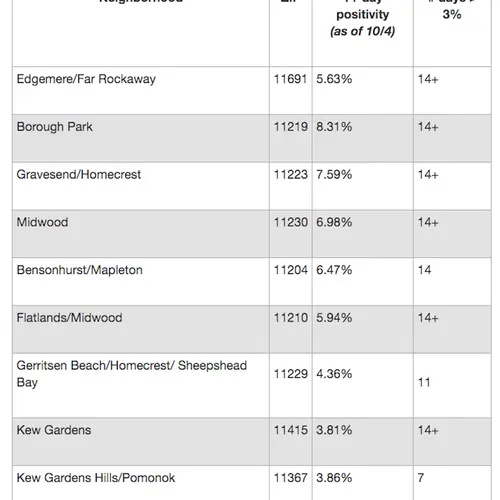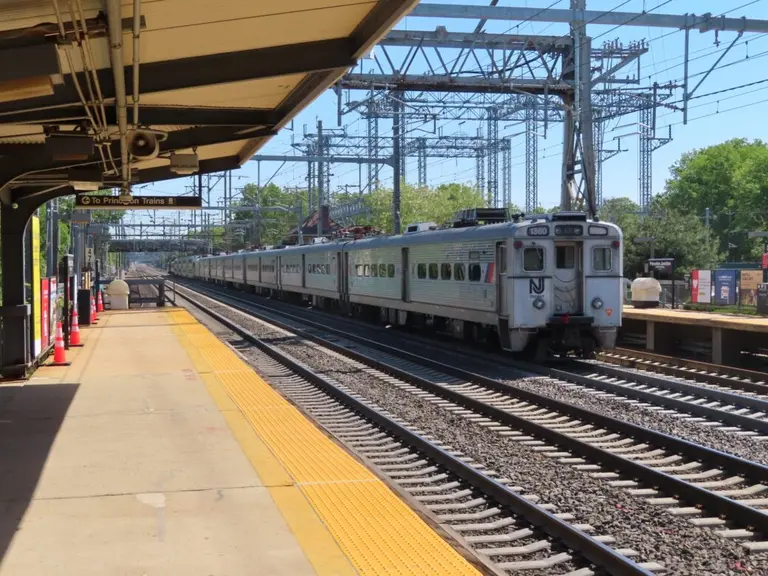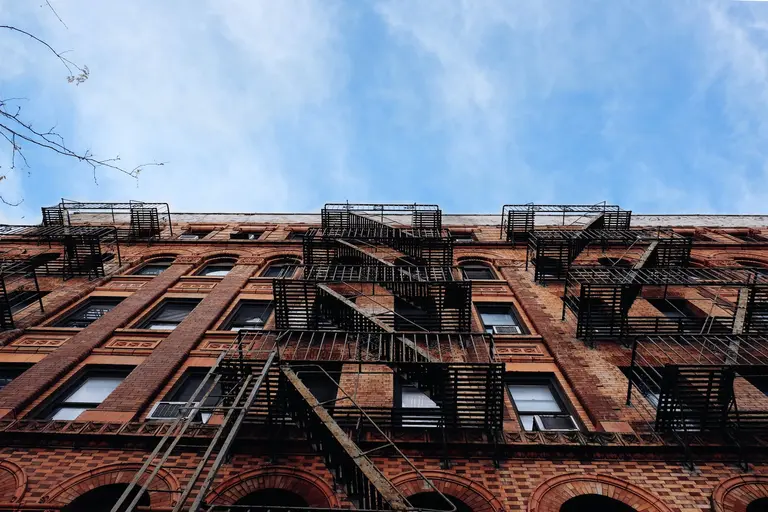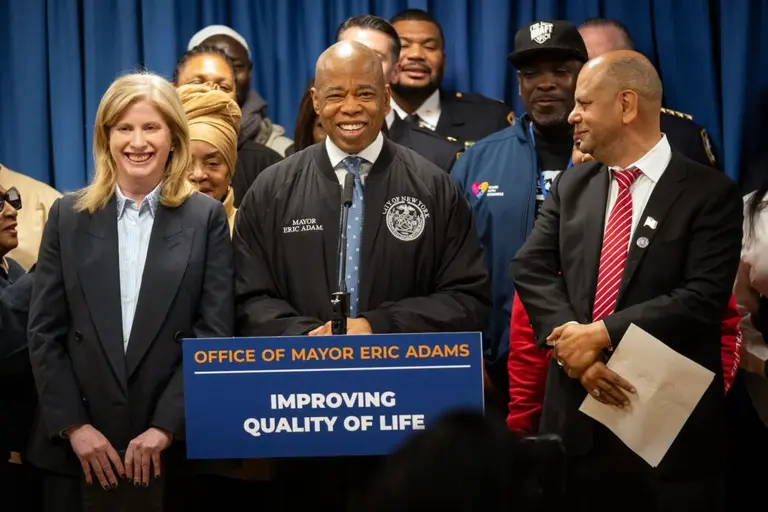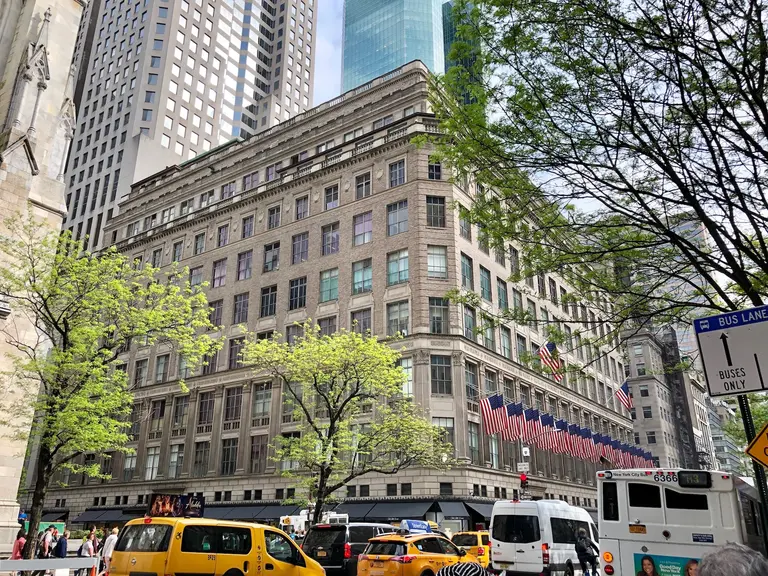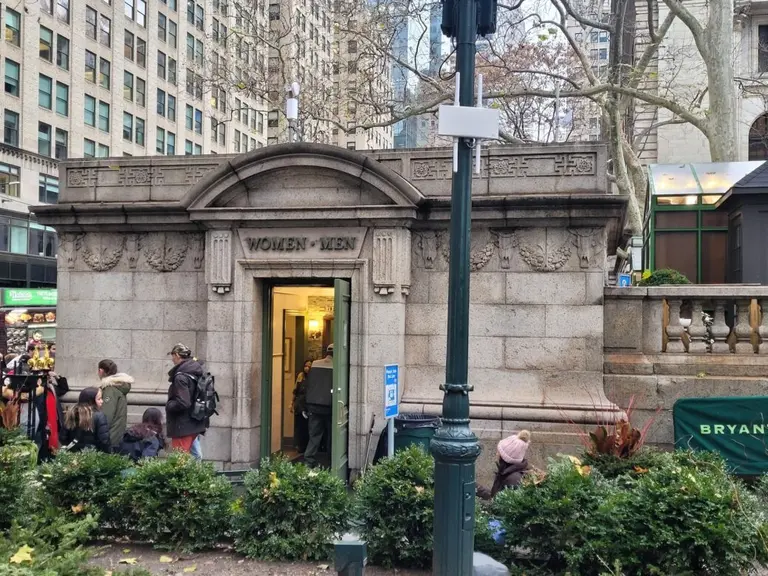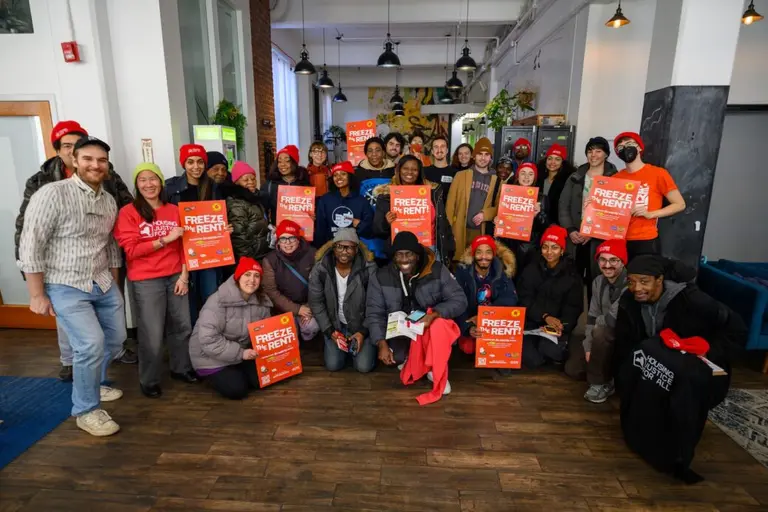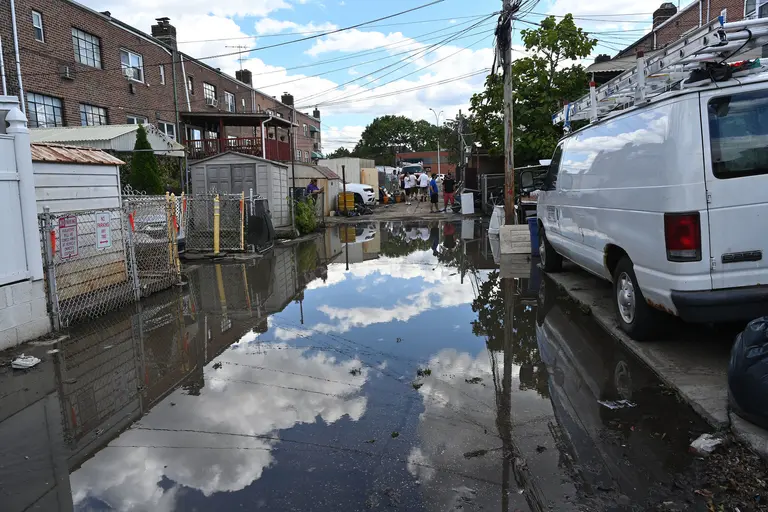Schools in New York City’s COVID hot spots will close starting Tuesday
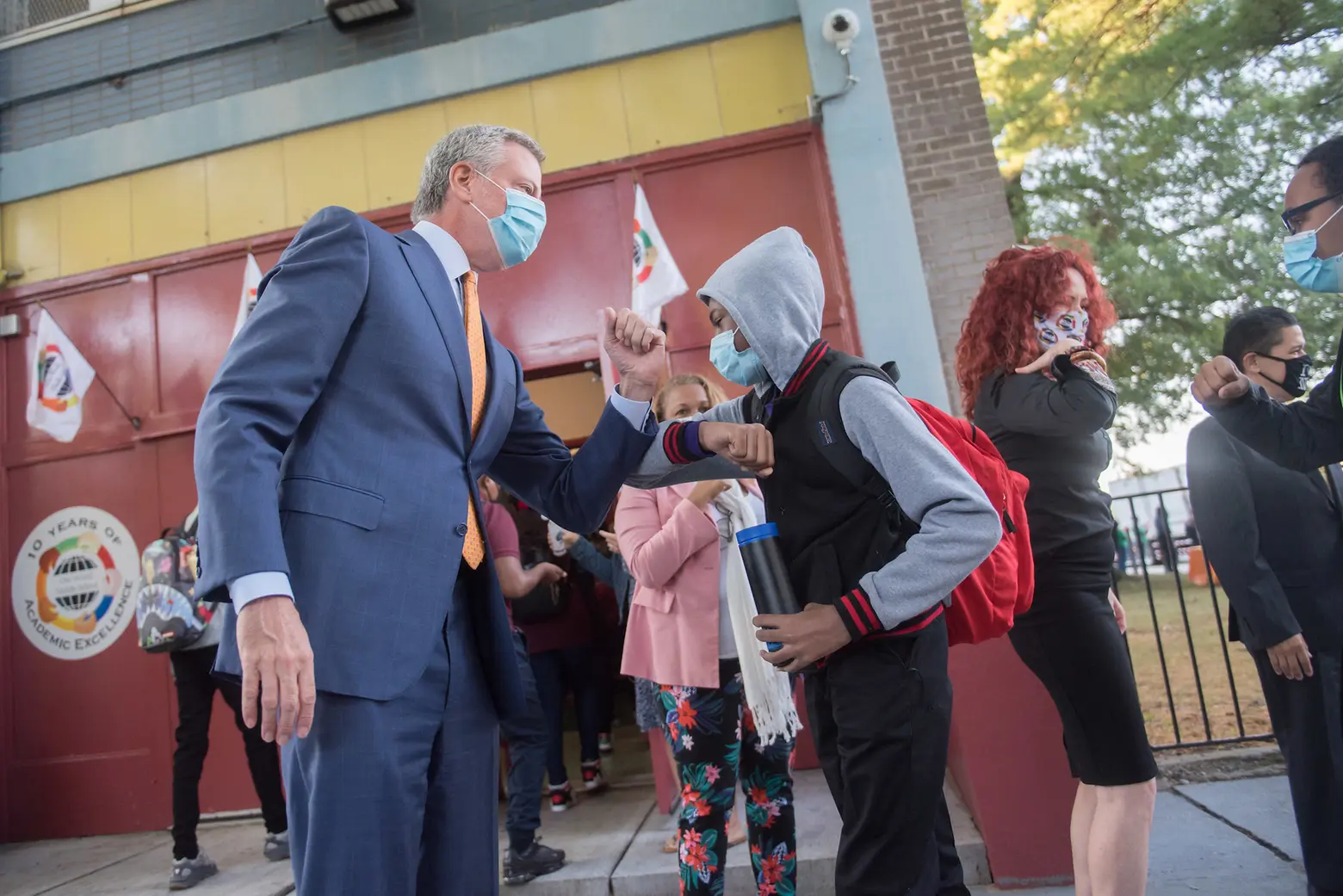
After fully reopening last week, some schools in NYC will have to close again. Photo credit: Michael Appleton/Mayoral Photography Office on Flickr
Schools in nine New York City ZIP codes where COVID-19 cases have grown rapidly will temporarily close starting Tuesday, Gov. Andrew Cuomo said. Mayor Bill de Blasio first announced on Sunday plans to shut down schools in these neighborhoods, which includes about 200 private schools and 100 public schools. While de Blasio’s original proposal would also shutter non-essential businesses in these hot spots and high-risk activities in an additional dozen ZIP codes that are seeing an increase in cases, Cuomo on Monday said only schools will be closed as of now, adding that the state will review the data before taking further action. The governor said he would not “recommend any NYC family send their child to a school” in those areas.
Cuomo on Monday said studying local ZIP codes is not an ideal measure of how the virus spreads and an imperfect determinant for the areas that should be shut down. The governor said state health officials will be reviewing and refining data to determine if non-essential businesses should be closed along with schools and for how long.
During a press conference on Monday, de Blasio said the city will move ahead with its original plan to shut down non-essential businesses on Wednesday unless the state provides an alternative plan. This includes allowing take-out and delivery at restaurants only.
The nine ZIP codes have seen positivity rates of the coronavirus reach over 3 percent across 14 days, with some neighborhoods as high as 8 percent. The ZIP codes encompass the neighborhoods of Edgemere/Far Rockaway, Borough Park, Gravesend/Homecrest, Midwood, Bensonhurst/Mapleton, Flatlands, Gerritsen Beach, Sheepshead Bay, Kew Gardens, and Kew Garden Hills/Pomonok.
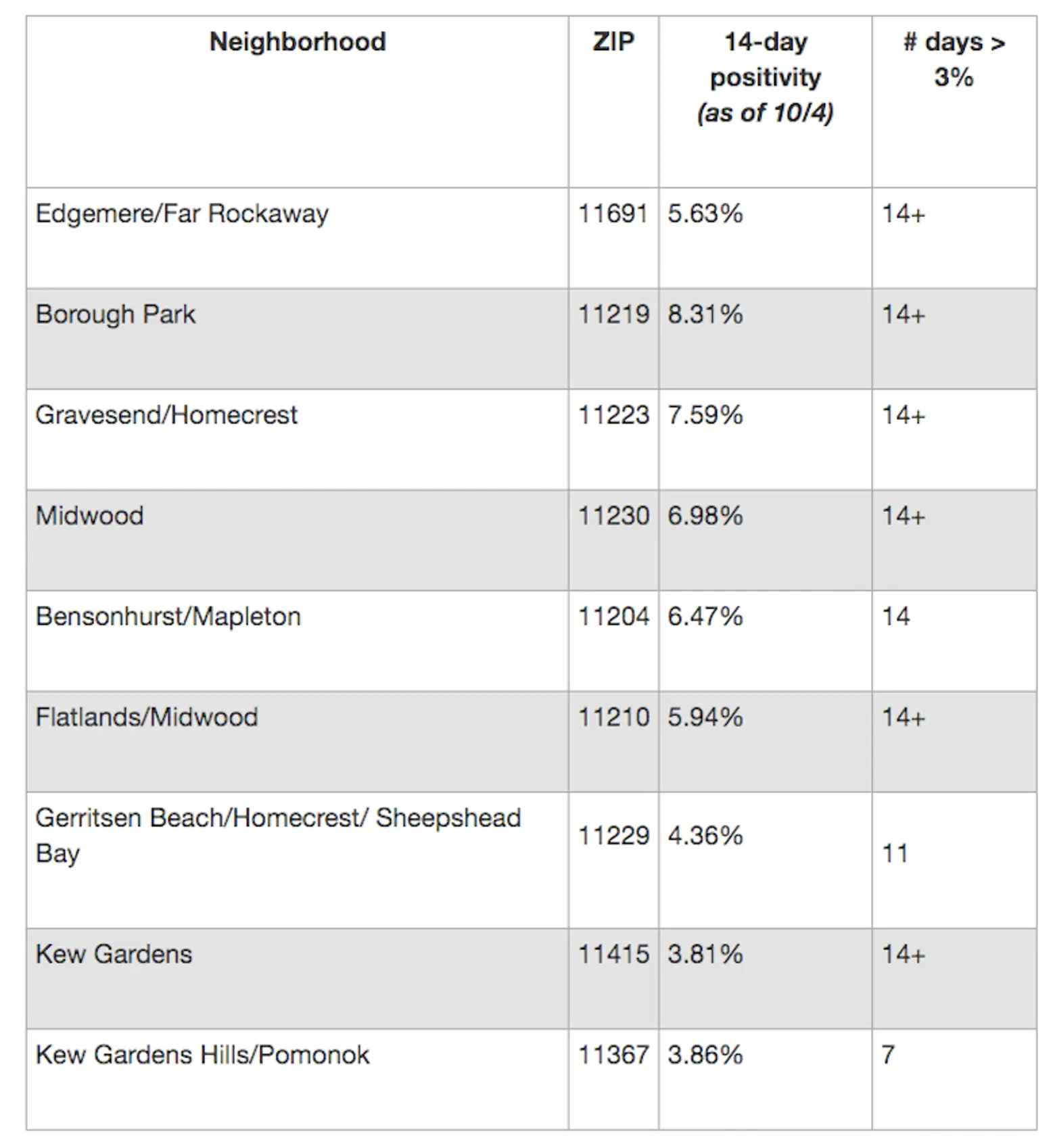
Nine ZIP codes seeing an increase in cases; Courtesy of NYC Mayor’s Office from 10/4/20
In these neighborhoods, roughly 200 private schools and yeshivas and 100 public schools will be closed. According to de Blasio’s proposal, schools can reopen after two weeks if rates fall below 3 percent. If cases continue to grow, they will remain closed for four weeks. The closure comes just days after the city’s public schools fully reopened last week.
The city’s proposal includes additional restrictions in neighborhoods where positivity rates remain around 2 and 3 percent. In 12 ZIP codes, high-risk activities, including indoor dining (which just reopened last week), gyms, and indoor pools, would also close, under de Blasio’s plan.
Cuomo said his team will review the data in these areas before making a decision on prohibiting these activities. The governor also said the state will take over the enforcement of coronavirus regulations in these hot spot areas, with the city providing personnel.
Neighborhoods that could be affected include parts of Bed-Stuy/Clinton Hill/Fort Greene, East Williamsburg/Williamsburg, Brighton Beach/Manhattan Beach/Sheepshead Bay, Bergen Beach/Flatlands/Marine Park/Mill Basin, Crown Heights (East), Kensington/Windsor Terrace, Rego Park, Fresh Meadows/Hillcrest, Hillcrest/Jamaica Estates/Jamaica Hills, Auburndale/Fresh Meadows/Pomonok/Utopia.
The governor also said “mass” religious gatherings continue to be a problem. If religious leaders do not agree to the state rules restricting capacity and requiring social distancing at gatherings, the state will shut them down, Cuomo said.
In addition to neighborhoods in Brooklyn and Queens, the state has also identified clusters in Rockland and Orange Counties. Cuomo on Monday said he will not be closing schools in Rockland and Orange Counties but could decide to later on if necessary.
According to the state, 20 ZIP codes across New York with outbreaks have an average positive rate of 5.5 percent. However, the state’s positive infection rate still remains low, with just over 1 percent of tests coming back positive.
RELATED:
